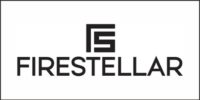 In the face of escalating natural disasters and complex emergencies, the integration of Artificial Intelligence (AI) into disaster response strategies has emerged as a game-changer. This comprehensive article explores how AI, with its predictive capabilities, data analytics, and automation, is revolutionizing the landscape of disaster response. From early warning systems to real-time decision-making, AI is proving to be a transformative force in mitigating the impact of disasters and saving lives.
In the face of escalating natural disasters and complex emergencies, the integration of Artificial Intelligence (AI) into disaster response strategies has emerged as a game-changer. This comprehensive article explores how AI, with its predictive capabilities, data analytics, and automation, is revolutionizing the landscape of disaster response. From early warning systems to real-time decision-making, AI is proving to be a transformative force in mitigating the impact of disasters and saving lives.
Harnessing Predictive Analytics for Early Warning Systems
This section delves into the application of AI in predictive analytics for early warning systems. By analyzing historical data, weather patterns, and environmental indicators, AI models can forecast potential disasters with unprecedented accuracy. Case studies and success stories highlight the efficacy of AI-driven early warning systems in providing timely alerts to vulnerable communities, enabling proactive evacuation and resource mobilization.
Real-Time Data Analytics for Situational Awareness
 The role of AI in real-time data analytics is examined in this section. AI algorithms process vast amounts of data from diverse sources, including satellite imagery, social media, and ground sensors, providing responders with a comprehensive view of the unfolding crisis. The article explores how AI enhances situational awareness, aids in decision-making, and facilitates the coordination of response efforts in dynamic and rapidly evolving disaster scenarios.
The role of AI in real-time data analytics is examined in this section. AI algorithms process vast amounts of data from diverse sources, including satellite imagery, social media, and ground sensors, providing responders with a comprehensive view of the unfolding crisis. The article explores how AI enhances situational awareness, aids in decision-making, and facilitates the coordination of response efforts in dynamic and rapidly evolving disaster scenarios.
Autonomous Systems for Rapid Deployment
AI-powered autonomous systems are transforming the speed and efficiency of disaster response. This section investigates the use of drones, robotic vehicles, and other autonomous technologies in delivering supplies, conducting search and rescue operations, and assessing the extent of damage in hard-to-reach areas.
The article showcases instances where AI-driven autonomy has significantly reduced response time and increased the effectiveness of on-the-ground operations.
AI in Humanitarian Assistance and Resource Allocation
AI’s role in optimizing humanitarian assistance and resource allocation is explored in this section. By analyzing demographic data, infrastructure conditions, and population dynamics, AI models contribute to the efficient distribution of aid and resources. Case studies illustrate how AI-driven algorithms enhance the targeting of relief efforts, ensuring that assistance reaches those most in need during and after disasters.
Natural Language Processing for Emergency Communication
 The application of Natural Language Processing (NLP) in emergency communication is the focus of this section. AI-driven chatbots and language processing systems play a crucial role in disseminating accurate information, addressing public queries, and combating misinformation during disasters. The article discusses the implementation of AI-powered communication tools and their impact on fostering transparency and trust in crisis situations.
The application of Natural Language Processing (NLP) in emergency communication is the focus of this section. AI-driven chatbots and language processing systems play a crucial role in disseminating accurate information, addressing public queries, and combating misinformation during disasters. The article discusses the implementation of AI-powered communication tools and their impact on fostering transparency and trust in crisis situations.
Machine Learning for Post-Disaster Recovery Planning
Machine Learning (ML) algorithms are increasingly being utilized in post-disaster recovery planning. This section explores how AI can analyze post-disaster data to predict long-term impacts, assess infrastructure vulnerabilities, and formulate resilient recovery strategies. The article emphasizes the role of ML in learning from past disasters to inform future recovery and reconstruction efforts.
Ethical Considerations and Challenges
While AI presents unprecedented opportunities in disaster response, ethical considerations and challenges must be addressed. This section discusses issues such as data privacy, algorithmic bias, and the potential misuse of AI in crisis situations. The article explores frameworks for ethical AI deployment and emphasizes the importance of responsible and transparent practices in the integration of AI into disaster response protocols.
Collaborative Platforms and Global AI Initiatives
The importance of collaborative platforms and global AI initiatives is highlighted in this section. The article explores how international organizations, governments, and tech companies are pooling resources to develop AI solutions for disaster response on a global scale. Case studies showcase successful collaborations that leverage AI expertise to build more resilient and adaptive disaster response ecosystems.
As the world faces escalating challenges from natural disasters and unforeseen emergencies, the incorporation of AI into disaster response strategies stands as a beacon of hope. This article underscores the transformative potential of AI in early warning systems, real-time decision-making, autonomous operations, humanitarian assistance, and recovery planning. By navigating the ethical considerations and fostering global collaboration, stakeholders can harness the full power of AI to build more resilient communities and mitigate the impact of future disasters.























































